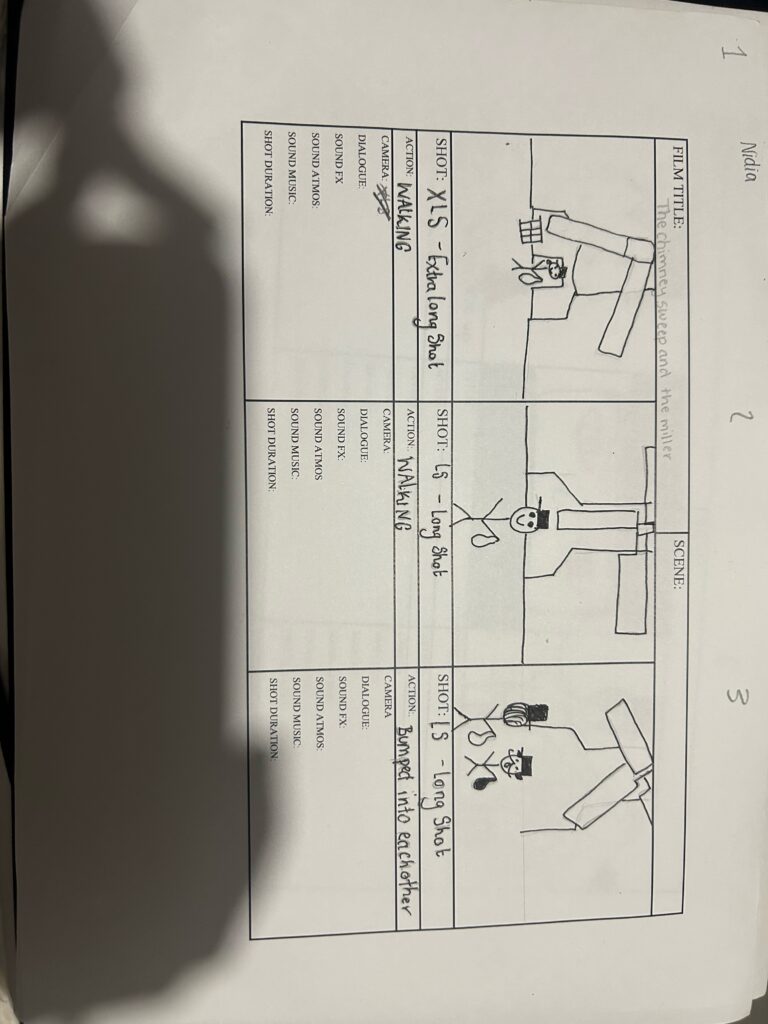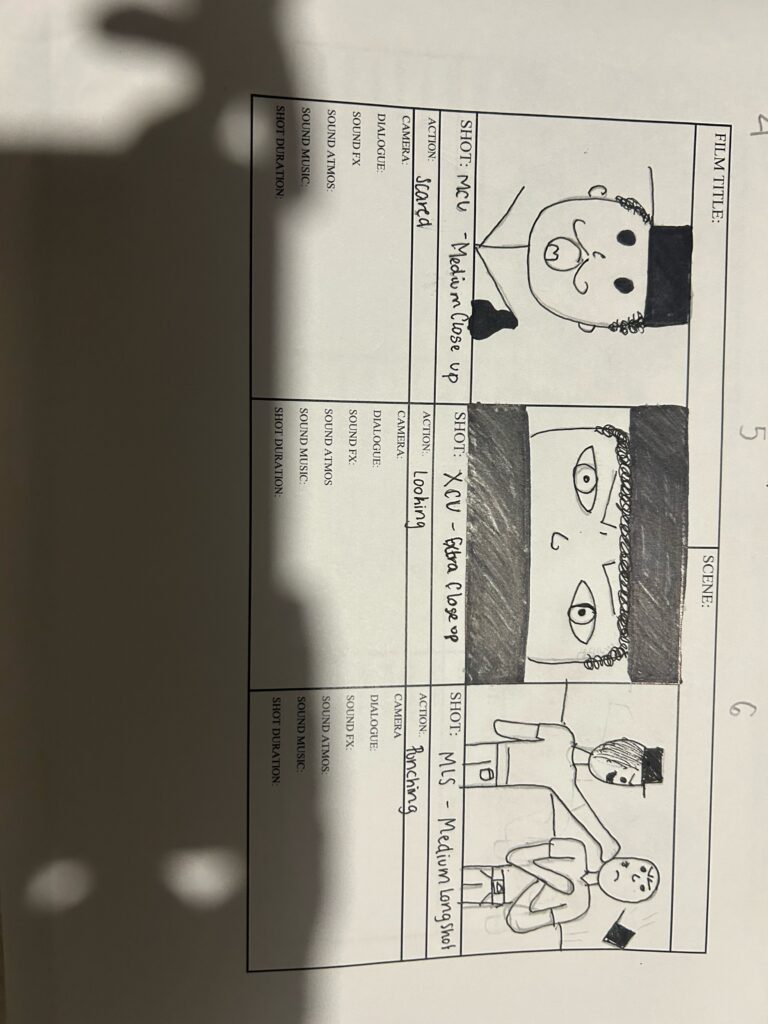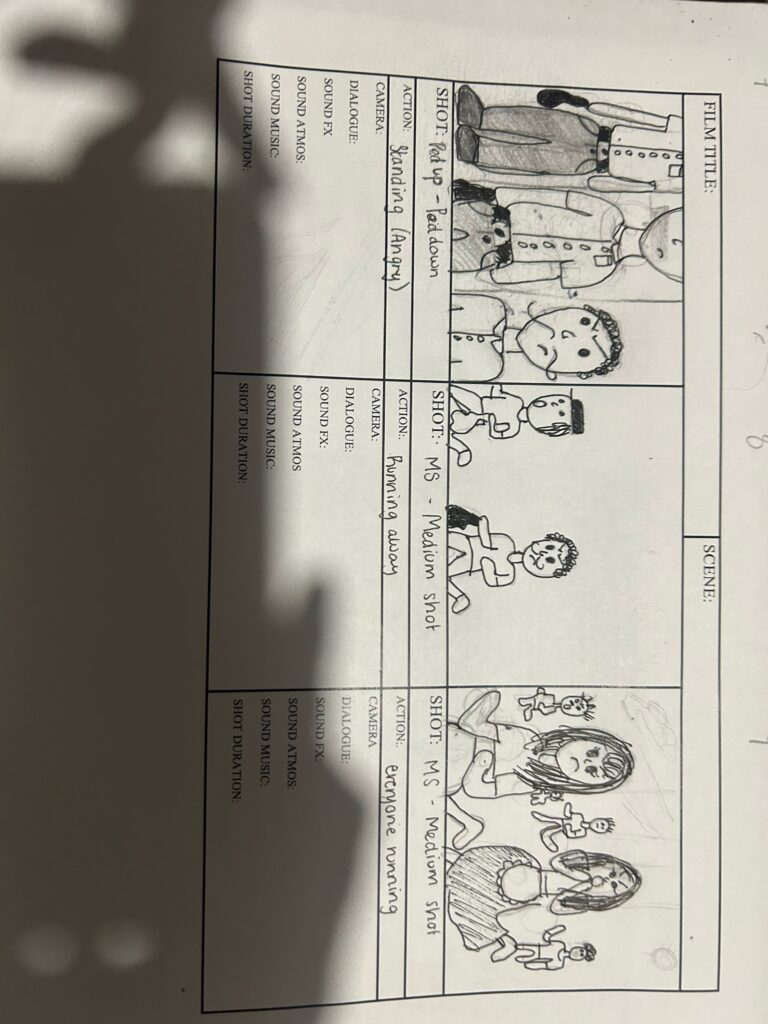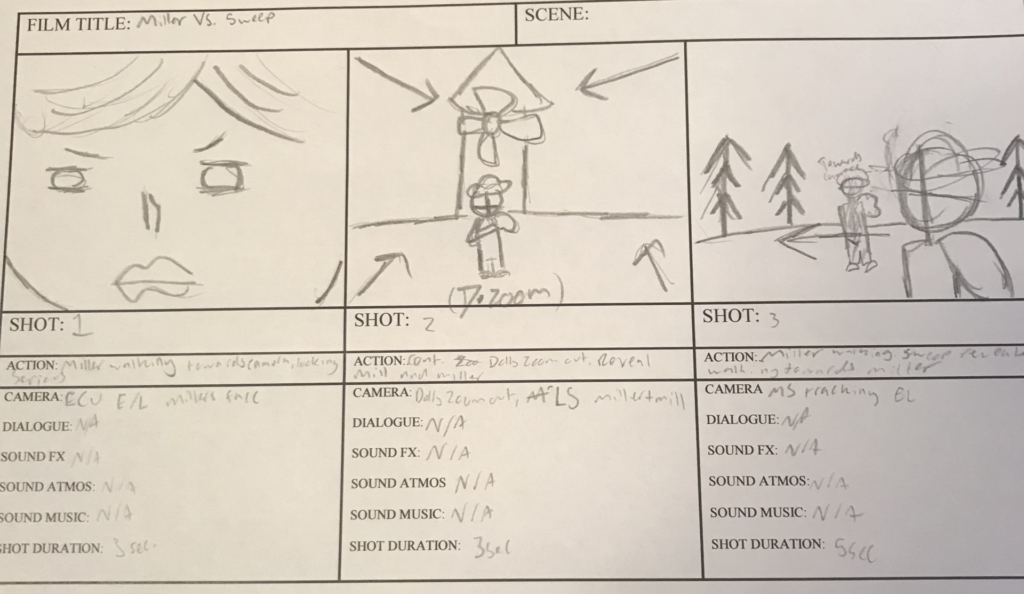
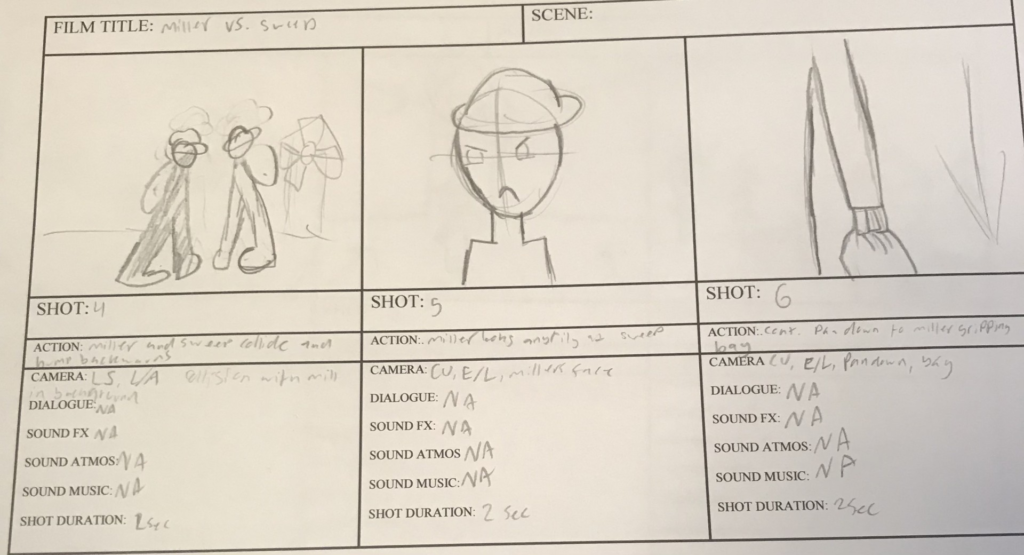
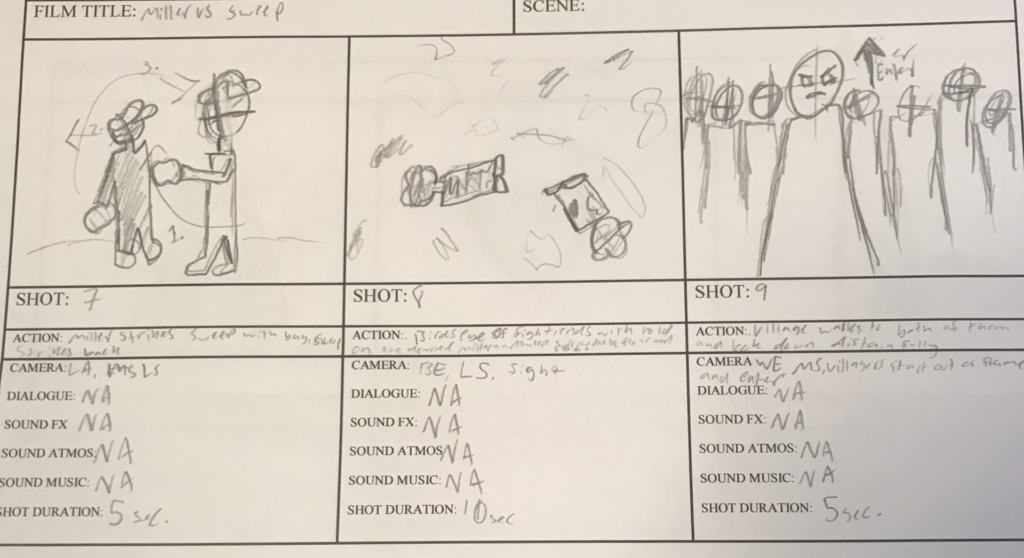



| Critical Score | Memorable Scene |
| 6/10 I enjoyed parts of the movie; I enjoyed the character design and their costumes. I found that the cast were all really suited for their roles, which made the film enjoyable for me.The plot stood out for me, showing how young people can be brainwashed into ideas that are so far from what they believe. The reason it is lower than the over movies we have watched is due to the language and some scenes were just uncomfortable to watch, that may have been intentional by the director, but I found it disturbing. | I think the scene which stands out the most is the scene where combo attacks milky, this stands out to me due to the break in his behavior. All throughout the movie combo shows racist behavior but this final scene shows that extreme feelings he has deep within. This also shows Shuan’s realization that combo is not a caring man like he believed him to be. |
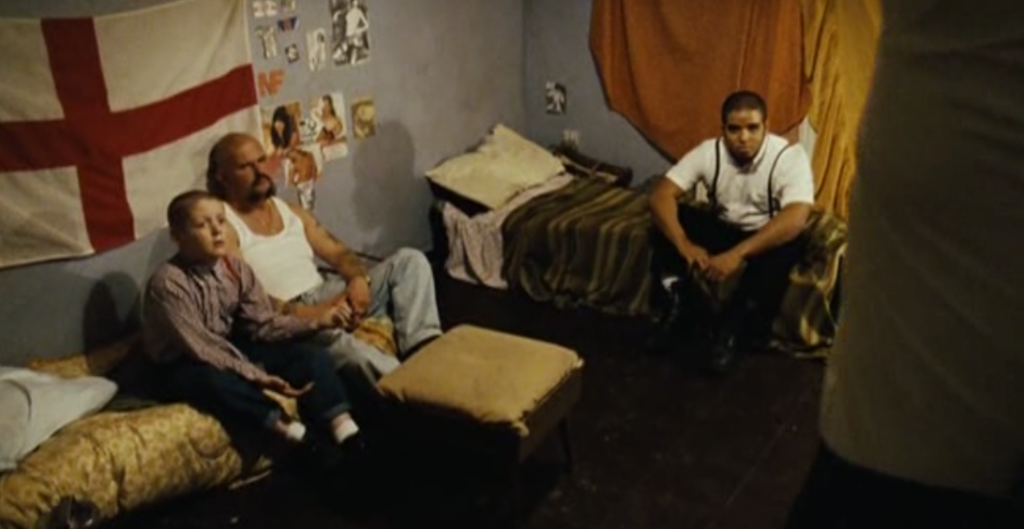
Shane Meadows (2007)
overall score – 8/10
I gave this movie a 8/10 because the film was engaging and I believed it was funny since there was a lot of jokes made throughout. The characters where entertaining and also shows a wide range of different types of people in a group of friends. Some scenes in the movie where difficult to watch and it was hard to understand what the characters where saying at some points.
Memorable scene

A memorable scene in the movie was when Shaun was hanging out with woody and al of his friends and it was the first time we get to see Shaun not picked on and actually have a fun time. Its also a fast pace scene with the camera angles changing rapidly and the camera following in them around at times, this made me feel more involved with the scene and see from their perspective
Sound
Shane Meadows uses classic British songs like ‘Come On Eileen’ and ‘Tainted Love’ to make the movie more in sync with English culture.
Mise En Scene
The film is set in a working-class estates with run down houses, overgrown shrub and graffiti everywhere. This gives off the impression of poverty and unemployment.

Shane Meadows uses clothing to represent identity and skin head culture. The skinhead clothing is Doc Martens, rolled-up jeans, braces and Fred Perry shirts. is historically accurate and signifies the group’s working-class roots.
Although as Sean becomes more of a skin head to feel included his clothing is the same the skinhead group. This shows he is searching belonging within the group.

Cinematography
In the film Shane Meadows makes the camera look like it is being held by a camera mans so that the point of view we are seeing makes us feel as if we are in the room with the characters. It gives off a shaky affect like the camera is an extra person in the story.
All aspects of film form including narrative contribute to the representations of cultures and societies (gender, ethnicity and age) including the ideological nature of those representations.
ideology- a system of ideas and ideals, a set of opinions or beliefs of a group or an individual.
Performance- what carries representation?
age, costumes, gestures, body language, setting/background
Stereotype- A widely held but fixed and oversimplified image or idea of a particular type of person or thing.
Countertype- Countertypes can construct an alternative ideology which reflects a less mainstream view point. Casting someone against the stereotype.
Sarah Connor, Example.

In the first movie, Sarah Conner is a young woman working a job as a waitress. She doesn’t have ambition to succeed in her job, as we see her turning up late and not being attentive to customers when but in a stressful situation in the diner.

In the second movie, terminator 2. We see Sarah Conner dressed in masculine clothes unlike the previous movie. She’s also extremely comfortable about guns and smokes. In this movie she is transformed into a action heroine
Representation in Trainspotting.
Consider the ways in which the following groups are represented in the film-
Young people
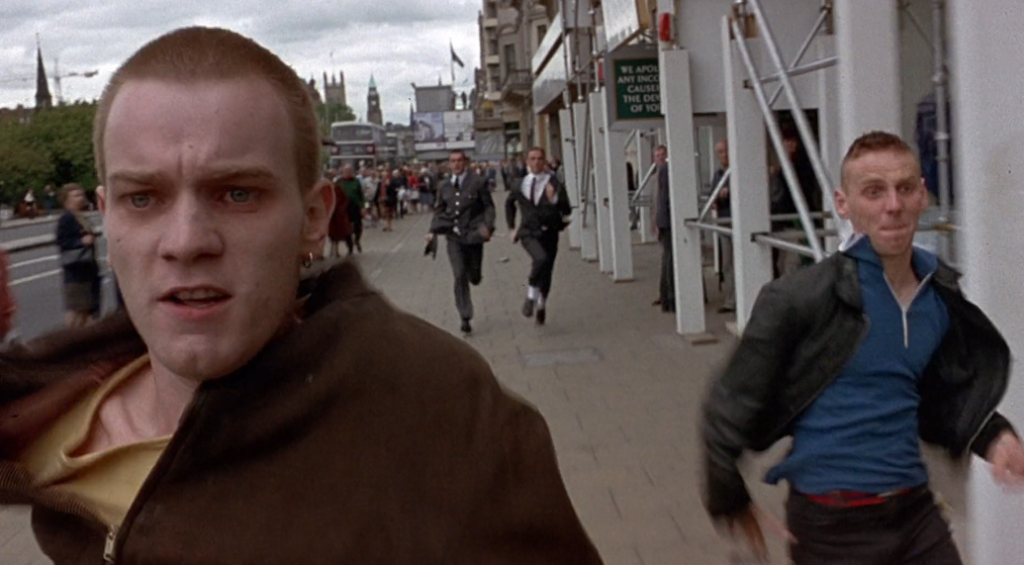
In train-spotting the young people are seen often acting against following a ‘normal life’ for example in the choose life monologue it shows the uninterested nature of the young people to live a simple life with families and jobs. I also see the young people in train-spotting to have a great influence on each over, showing that young people are subject to peer pressure. For example Tommie who lived a normal life is suddenly introduced to drugs by his friends. We also see this effect with Diane who often smokes due to Renton.
Older people
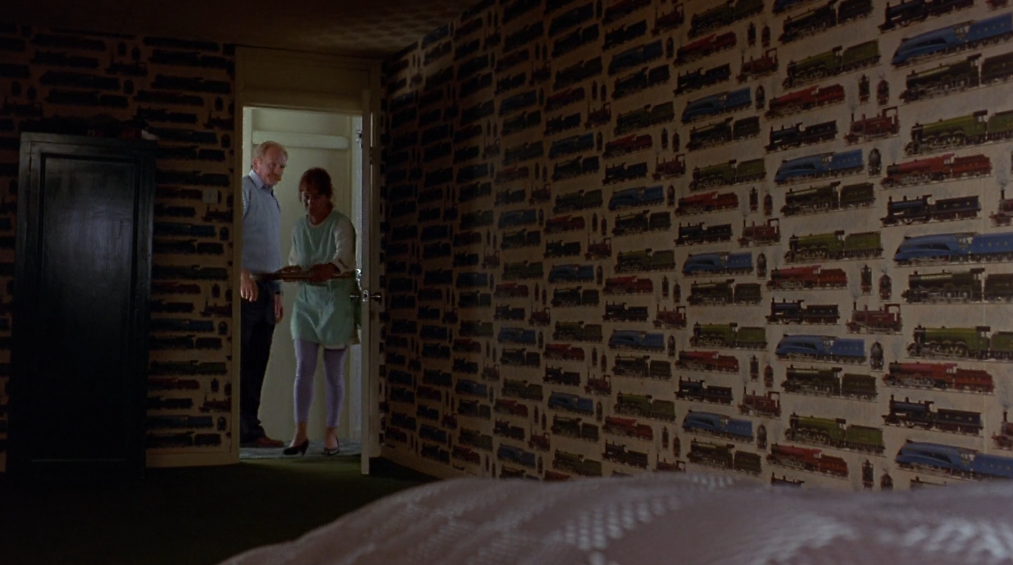
The representation of older people in transporting from my point of view is they are the people who do choose life, for example Renton parents are seen to own their own home and have a family with a quiet life.This is everything the younger people act against. We also see the young people steal perceptions from the older generation making them seem gullible and vulnerable.
Working class people
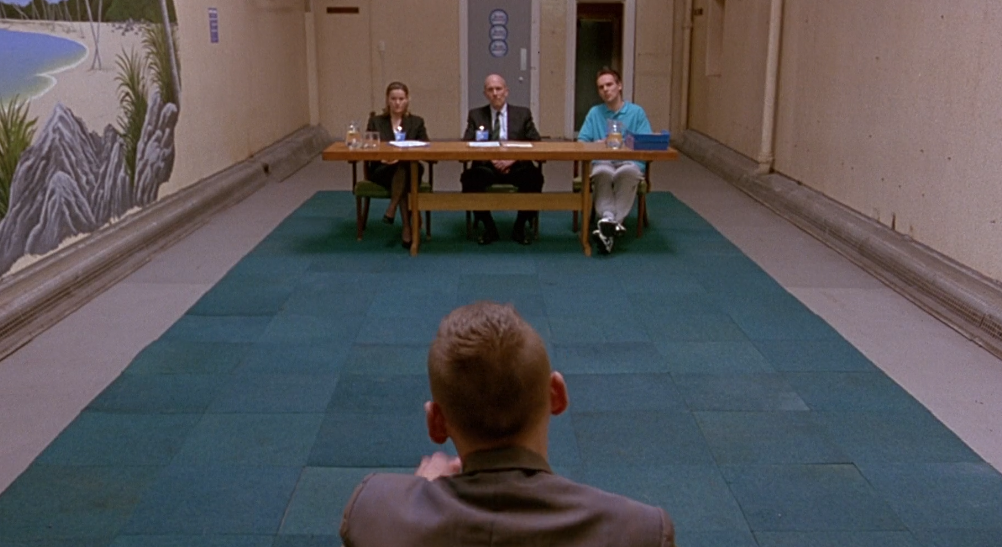
The working class in trainspotting is represented in the way that you are never going to get any fulfilment from the job you work, the scene which represents this to me is spud in his job interview. He is applying for a job in leisure which he has no real interest in. The scene is shot in a gloomy grey room showing the mundane nature of the job he is applying for. This shows that the working class aren’t given any opportunities to build their career.
Scottish people
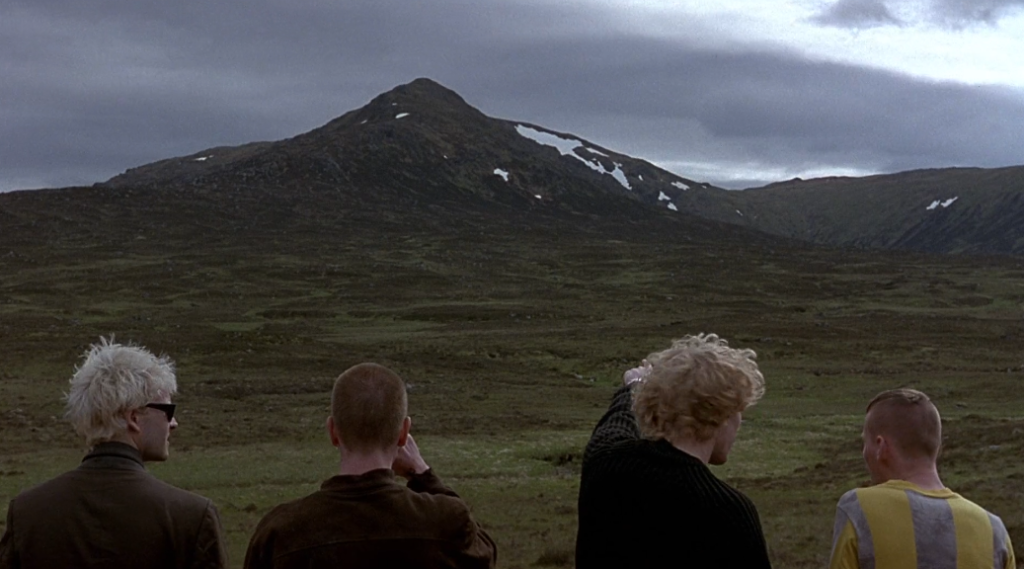
In the movie the scene which stands out to me about Scottish people is when they are waiting nearby the trains tracks looking at the beautiful Scottish mountains, however none of the boys there are proud to be Scottish and talk about how they dislike where they live. This belief is also followed up by Renton moving to London showing that it was easy for him to leave Scotland behind.
Addicts
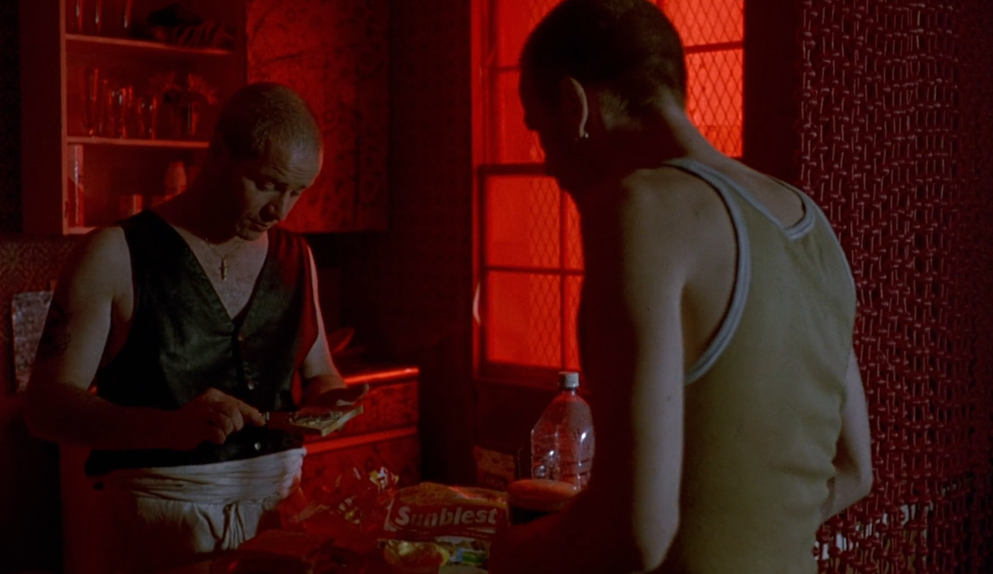
The addiction in trainspotting is not glamorised like some over films choose to do. In trainspotting we see the characters do drugs in dirty rundown spaces and the movie also shows the negative effects drugs can have on your life. Addicts are represented in the movie by constantly being in a battle against moving away from drugs but being quickly pulled back into the world. ” one last hit” the phase is used a lot in this movie showing how the characters addiction never truly disappears.
Men

The men in the movie, are represented by having toxic relationships with each over but also by violence. Throughout the movie the men betray and lie to each over. For example tommie’s video tape which is his downfall but little reaction or guilt is shown to his death, showing that the men in this movie are represented as morally bankrupt.
Woman
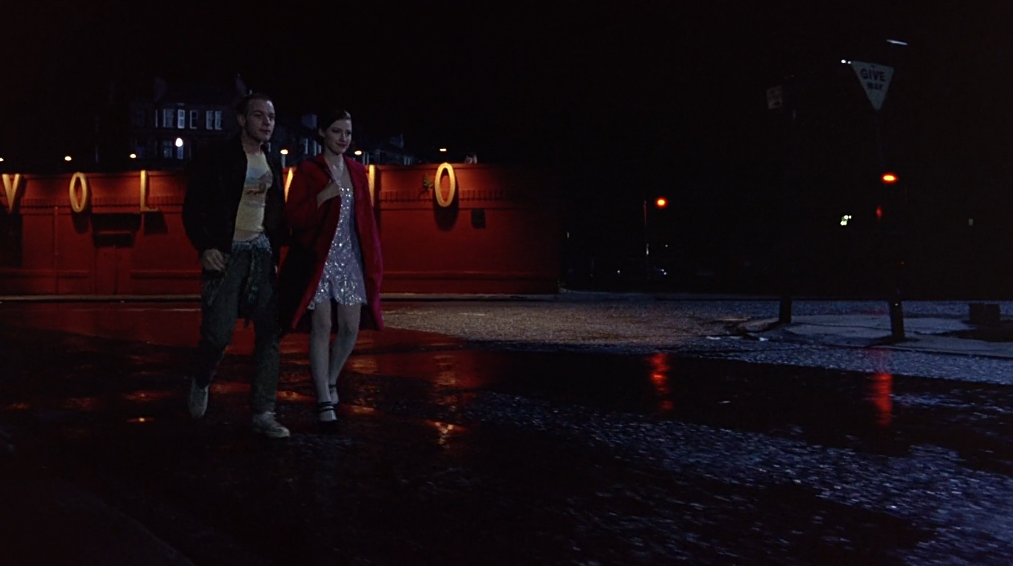
The woman in this movie are reperneted as almost side pieces to the men, for example Renton in the nightclub is searching For a woman just because his friends have one brings on the desire not because he wants to form a romantic relationship. The woman in the movie such as Diane also are only present due to their male relationships showing that they are seen through the male gaze.


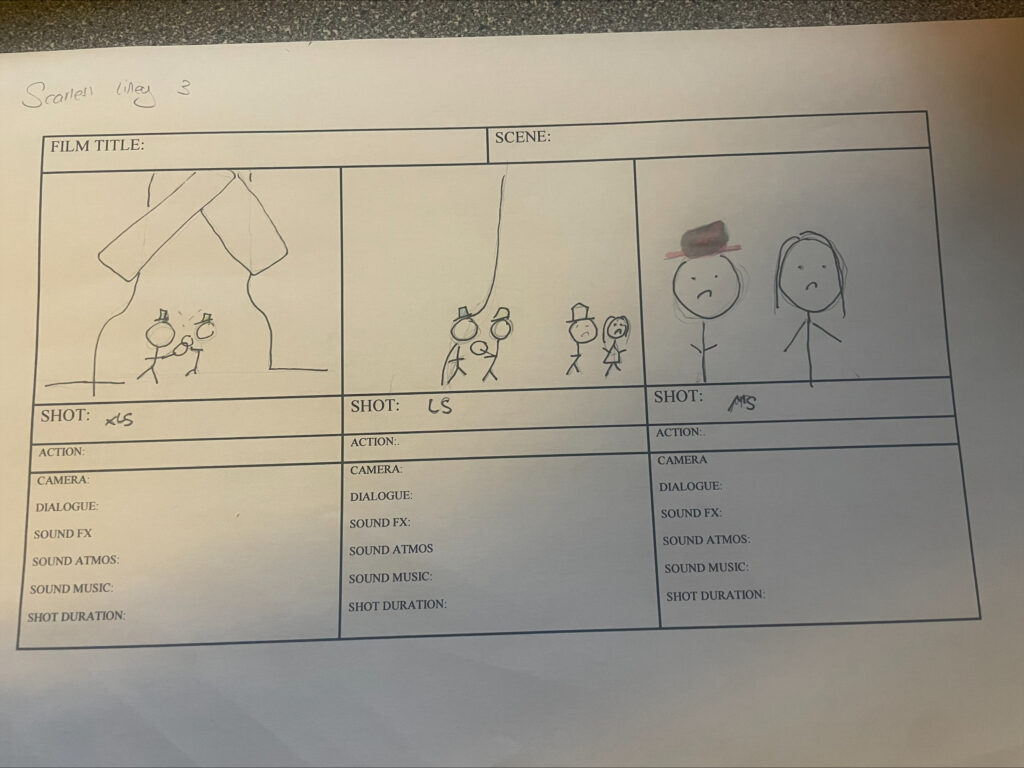
Critical score – 9.5/10
In my opinion ‘This is England’ is the best movie that we have watched on our course so far. I loved the setting the movie was based on in the mid 80s. I also liked how the sets where real places each time. Nothing was made or set up for the movie. I liked how accurate it felt as well. I know i was not alive in the 80s. Not even close. Although the movie felt as if the director Shane Meadows was really accurate of how lower class England looked in the 80s.

One of my favourite scenes was near the beginning as Sean was reading a comic and the shop keeper took it off him. I like the way Sean was dealing with it with not a care in the world. Wanting his cola cubes.
Over all this was a great film to watch and I highly recommend it to whoever has not seen it.
SOUND-In the opening scene of Trainspotting director Danny Boyle decided to use the song “Lust For Life” by Iggy pop. This is a fast paced song that matches well with the characters running from the police in Edinburgh’s streets. The title “Lust For Life” coincides with Renton’s monologue about choosing a normal life over heroin.
Cinematography- In every scene we see Swanny, also known as Mother Superior there is a halo of red light around him (2:30) This red light is only present in the drug den. This red glow is representative of the life style that the men live while they are under the influence of their addiction. Red is a universal colour in trainspotting that represents sex, drugs, death and all other things that won’t help Renton “Choose life.
MISE-EN-SCENE- (34:27) The set design of the drug den also holds important representation. The drug den has overwhelming shades of brown and dark, dirty colours with used needles and burnt spoons, But. Scattered around the den are muted vibrant colours, on the walls and carpet. These subtle vibrant colours represent the euphoria that the characters go through when they inject heroin, but the darker browns and greys represent the decay and disease that their addiction creates.
EDITING- (1:20) In this scene we see a freeze frame of each important character. The effect of this editing style tells the audience that each person we see is important to the plot and will be reoccurring.
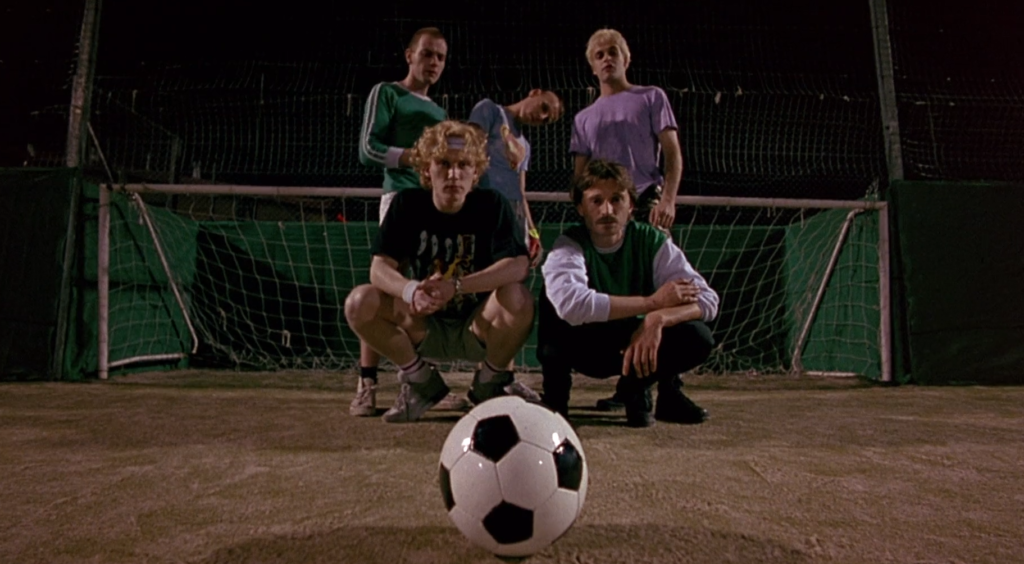
Young People-
They feel alienated from traditional paths like stable jobs, marriage, or consumerism, instead embracing a chaotic and self-destructive lifestyle as a form of resistance. Their drug use and disregard for authority reflect a broader rebellion against societal expectations and norms. Many of the young characters prioritise pleasure and instant gratification, which is often pursued through heroin, alcohol, and casual sex. he male characters frequently conform to toxic ideas of masculinity, such as suppressing emotions and engaging in risky behaviors.
Working Class-
The working class in Trainspotting is depicted as trapped in a cycle of poverty, addiction, and disillusionment, with little hope for change. While the film critiques their self-destructive behaviors, it also portrays them with empathy, highlighting the systemic failures and societal neglect that contribute to their struggles. This nuanced representation offers a commentary on the economic and social realities of the time, making the film both a character-driven story and a broader critique of class inequality.
Addicts-
Addicts in Trainspotting are depicted as deeply flawed yet human individuals, caught in a web of personal choices and systemic failings. The film presents addiction as a devastating and multifaceted issue, blending moments of dark humor, tragedy, and raw honesty to challenge stereotypes and provoke empathy.
Scottish People-
Scottish people in Trainspotting are depicted with honesty and complexity, balancing critiques of societal issues with an acknowledgment of cultural resilience and humor. The film offers a raw, unvarnished portrayal of life in Scotland, highlighting both the struggles and the spirit of its people.
Older people-
Older people in Trainspotting are depicted as symbols of traditional values, societal stagnation, and generational disconnect. While some are shown as caring and concerned, they are often powerless to address the systemic issues faced by the younger generation. Their portrayal underscores the broader societal critique at the heart of the film, examining how intergenerational dynamics contribute to the struggles of addiction, poverty, and hopelessness.
Men-
Men in Trainspotting are depicted as deeply flawed yet human, caught in a cycle of rebellion, addiction, and disillusionment. The film critiques toxic masculinity and societal expectations while exploring themes of vulnerability, friendship, and the struggle for identity. This nuanced portrayal highlights the complexities of masculinity and its role in shaping the characters’ lives.
Women-
Women in Trainspotting are largely represented as secondary characters who serve to reflect and influence the male protagonists. While some, like Diane, show agency and assertiveness, the film primarily explores the struggles and experiences of its male characters. The female characters often embody themes of vulnerability, objectification, and exploitation, with their roles largely shaped by the male narrative. This portrayal is a reflection of the film’s critique of societal norms, including gender dynamics, but it also highlights the limited space for women within the world of Trainspotting.
